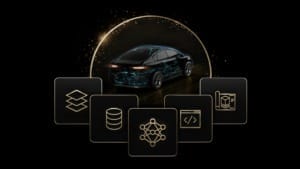Marketing foresight, planning, and preparation: Battling unprecedented crisis through a customer-centric transformation
Use foresight as a way for you to prepare for the future in a structured and well-thought way

The speed with which the world is changing is extreme. So many events happen overnight and can transform our way of living, working, and thinking. And the pace of change will only increase further. This means that businesses will have to be very adaptive to keep up. But are they prepared for this? Some perhaps and many of them learned a lot from the pandemic, but they are still not using those lessons in the best way.
Table Of Content
COVID-19 pandemic surprised us, and it showed us also how important it is to plan for the worse. Businesses that were happy with their way of working haven’t thought about ways to secure it or prepare for emergencies. Yes, there is a lot we can’t predict, but why not try our best? So, many decided that they needed to do better planning and preparation. To do so, they are exploring the power of marketing foresight in combination with customer-centricity. Keep reading if you want to know more about this and how you can implement them in your organization.
How does marketing foresight help with planning and preparation?
Foresight is a way for you to prepare for the future in a structured and well-thought way. With the help of this technique, you will be able to anticipate any upcoming changes and plan how to react. But this is not only a process that you should implement. It is also a mindset that you should adopt and try to implement in any aspect of your business. Also, foresight requires a lot of agility and determination.
This approach is very different because it starts with a view of the future and works back to the present. Most other planning approaches work the opposite way — they start from the present and try to predict the future based on it. However, when you try to project the present to the future, you might neglect many other external factors that might play a big part. But with marketing foresight, you can imagine much more possibilities and outcomes. Companies using this technique tend to have a more holistic approach and understand better external factors.
Imagining a great variety of possible scenarios and outcomes is the key to success. If you plan for those possibilities, there will be barely anything that can surprise you. Based on those very wild assumptions for the future, you can prepare a strategic plan that will save you potential losses. And this is not applicable only for C-levels, but it can be a way of working and planning at any level of your company.
The most important for the marketing foresight approach is that you don’t start with asking yourself where your company is now and the most logical next step. Removing this part of the process allows you to open your mind and reach further. So, you can actually start with either the question “Where do we want our company to go?” or if you want to plan particular scenarios, you can begin your questions with “What if X, Y, Z happens?” After that, try to imagine what the process to get there would be but in reverse. Start with the goal and then work on the steps in reverse chronological order until you reach a step closer to the present moment. Like this, you will forget about any current limitations, and you might reach higher than you ever thought. This will probably mean that it will take you more time and effort to achieve your goal, but you already plan how to do so.
Planning and preparation are crucial parts of the foresight approach. Keeping your approach structured will be necessary to achieve your goals. If everything is well-structured, even if you have many steps on the way, you will know exactly what you should do to achieve it or how to react in case of unexpected events. Thinking about where you want to go and what might happen gives you the possibility to think about the processes that need to be executed and how to structure them.

How should you start with foresight in combination with customer-centricity?
Customer centricity is another technique that many organizations have already adopted or are in the process of doing so. It means that everything you do or will do is with the idea that it will be beneficial for your customers. As the name suggests, you will have to put your customer in the center of your business. You can combine this with marketing foresight by adapting your plans to focus on your customers and improve their experience with your brand.
It is not that easy to start with marketing foresight because this might require a drastic change in your organization’s way of work. But there are a couple of steps that will help you make this transition easier. We will explain to you a bit about each of the steps.
Think of what might happen
To start with this approach, you will have to think about the possible impacts of any change that might happen. You can try horizon scanning, which is a technique that tries to identify trends while they appear on the market. Looking at the trends in your company, with the market, and with the world will give you valuable insights into the actions you need to take.
A perfect example is to understand how technologies will develop. Knowing that something might be introduced to the market, whether software or a device that can help you improve your business, can bring you many benefits. You can already start thinking of implementing it in your business and prepare by training your people. And most importantly, you will rethink what is possible and impossible.
Consider possible implications
Once you already have an idea of what might happen, you need to understand the implication of any change to your business. So, you will be using foresight to make a clear plan on how to react. A very useful way to do so is using scenario planning. In this way, there is a low chance that there might be a possible outcome you didn’t already prepare for.
You can structure the possible outcomes by priority and then imagine different scenarios. The scenarios can be either good or bad. For example, you can plan for a possibility where the work of a whole department can be completely automated. Or you can prepare for another global crisis like the one caused by COVID-19.
Transform insights into actions
Once you have the insights and already have the planning and preparation phase done, you can take action. You can do that with backcasting. This is a term that means to plan in reverse chronological order. You will have to plan the resources you will need and compare them to the ones you already have.
You should have a clear vision of the trajectory of change. Think about what the implication will be and then plan the actions. Maybe you will need more people or people with different skills. Or you might need different tools. Since you already have your strategy and plan, you just need to take the necessary actions to achieve your goals.
Final words
Using marketing foresight to plan and prepare is a very useful technique. With this approach, you will be able to predict any change that might happen, whether it is a good one like new technology that can help you or a bad one like a global crisis. And when you link it with customer-centricity, you will make sure you anticipate everything that might happen. You already have a good strategy for reacting that is aligned with your customers’ needs and wishes.













